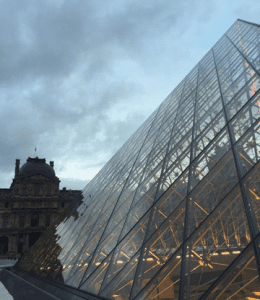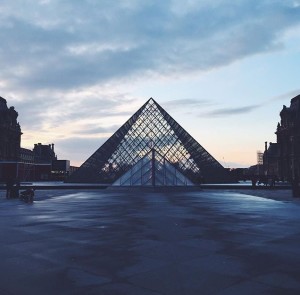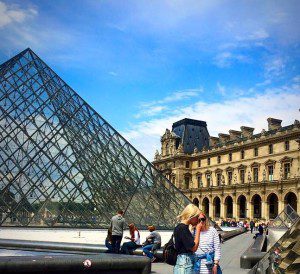 Mixing Contemporary With History
Mixing Contemporary With History
Have you seen the famous glass pyramid?
It takes creativity and smart thinking to successfully pull off modern architecture against historical surroundings.
There’s one contemporary building in particular that really works with mixing the old and new. The spectacular glass pyramid on top of one of the world’s most famous museums – the Louvre!
This pyramid is recognised all around the world and has become embedded in the Parisian culture.
The Louvre Renovation
Completed in 1989 and built by the famous Chinese and American architect Ieoh Ming Pei. Francois Mitterrant, the French president at the time, commissioned the renovation of the Louvre. This project was to help ease congestion from thousands of daily visitors at the original entrance.
A new grand entrance provided a convenient and spacious lobby separate from the galleries. It also created a focal point for visitors to start their museum experience. In addition to the new entrance to the Louvre, Pei’s design featured a new underground system of galleries. The renovation allowed the museum to expand its collection and provide a solid connection between the wings of the museum.
 Symbolic Entry
Symbolic Entry
Pei’s design implemented 603 rhombus-shaped and 70 triangular glass segments. Three smaller triangles were also built around the original structure to provide light to the space below. For Pei, the glass pyramid provided a symbolic entry that had historical and figural importance and also reinforced the main entry.
A Work Of Our Time
“Formally, it is the most compatible with the architecture of the Louvre…, it is also one of the most structurally stable of forms, which assures its transparency, as it is constructed of glass and steel, it signifies a break with the architectural traditions of the past. It is a work of our time.” – I.M. Pei
The monumental scale of the pyramid works as a central focal point in the court and also provides a contrast against the historical nature of the existing museum. The opaque transparency was designed to compliment and enhance the design of its French Renaissance surroundings. The glass and steel façade also subtly pays homage to the sloping roofs of the museum.

Facing Criticism
Like most modern buildings that are added to areas of rich history and cultural significance there were negative reviews which came with it.
Much of the criticism was that the modern style of the pyramid wouldn’t work with the louvre’s classical architecture. People were worried it would conflict against its Parisian backdrop and look alienated in form.
However, as the decades have passed and Paris has modernised Pei’s design is regarded with similar significance to that of the Eiffel Tower. And so has become a cultural icon for the people of Paris. Pei’s pyramid is now an inseparable symbol to the museum of Paris and will always mark the image of the louvre.





Leave A Comment Or Ask A Question